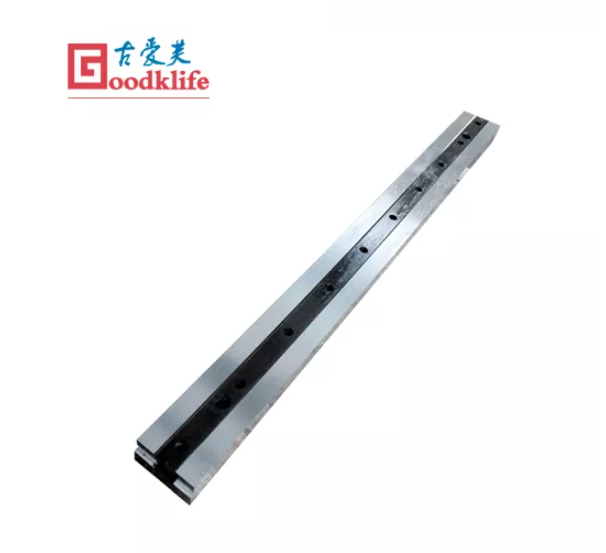Steps to Get Rid of Defects in the Shearing Process
Views : 294
Update time : 2022-04-13 17:04:00
Shearing is a metal fabrication process used to cut straight lines in sheet metal. The material is cut (sheared) between the edges of two opposing cutting tools.
In terms of equipment, shearing machines consist of a shearing blade, a crimping plate, upper and lower blades and a backstop for making sure the workpiece is cut to where it should be. A back support is often found to support the shearing section, with the option of automatic unloading or stacking.
To get the perfect cut, you need a high quality shear that can reduce the effects of variable sheet metal characteristics, internal stresses and geometry. These natural effects, if not corrected and compensated for, can become defects in the final product, thus reducing its quality.

Steel wire rod cutting blade
Variables in the shearing process
1 Cutting angle
It is the angle of the cutting edge of the blade. It has a small effect on the shear force: the use of two-edged blades requires a high shear force than when the upper blade is ground at a small angle.
2 Shear Angle
The shear angle (M) has a significant effect on the shear force and also on the twist, which occurs when cutting thin strips. The shear angle is less than 3°.3 Blade clearance
Blade clearance is the vertical distance between shear blades. The exact cutting clearance depends on the plate thickness and material strength. The exact value must be determined for each case. Cutting clearance is a critical factor in edge quality.

Shear Defects
1 Twist
This defect causes the board to twist along its axis. It usually occurs when shearing narrow strips. The shear conditions that increase this defect are related to the sheet metal geometry, material properties and cutting parameters.In order to reduce such defects, we recommend lowering the front angle. The addition of an anti-twist device is also useful.
2 Bending
This defect produces a plate that is bent along its plane. It is related to strip width, thickness, material strength and previous cold rolling direction. To reduce bending, it is recommended to use a smaller shear angle and to pre-cut along the rolling direction.We recommend choosing a shear with an adjustable blade pad to prevent this deflection in order to keep the blade perfectly linear.
3 Poor edge quality
During the shearing process, the material initially deforms plastically in a very small area (H), which leads to residual deformation. To improve edge quality, you must adjust the blade gap and control blade wear.4 Bowing
This effect causes the sheet metal to bend: the sheet metal is no longer flat, as its edges rise from the flat surface. This defect is related to the cutting angle and the strength of the sheet. To reduce this effect, it is recommended to use a smaller shear angle and to use a back support to hold the sheet metal in place.
Goodklife specializes in manufacturing shear blades, slitting blades, flying shear blades, scrap shear blades and other industrial blades for a wide range of applications in the steel industry, metallurgical industry and more. Our materials have excellent high tensile strength, hardness, toughness and hardenability. Please contact us to get your customized blades.


